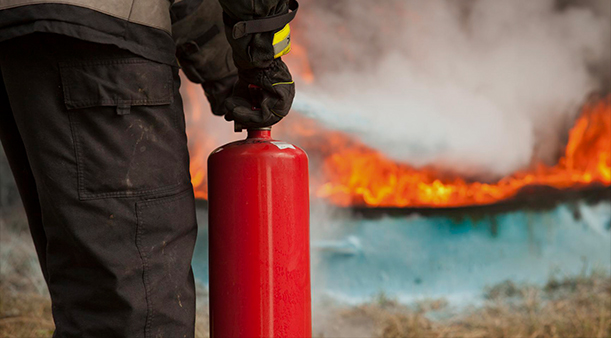Inlet Thread: M30x1.5
Outlet Thread: G1/8x28
Gauge Connection Thread: M10x1x12.5
Dip Tube Thread: M16x1.5
Pressure Mpa: 2.3-2.8
Check Valve: Valve core
How to Use a Portable Dry Powder Fire Extinguisher?
When using a portable dry powder fire extinguisher, remember four steps: one lift, two pulls, three grips, and four sweeps.
1. One Lift (Lift): Quickly lift the fire extinguisher and bring it close to the fire source. The best distance is approximately 2-3 meters from the fire source. When moving, remain calm, pay attention to the wind direction, and try to stay upwind to avoid flames and smoke.
2. Two Pulls (Pull Out the Safety Pin): Hold the fire extinguisher and use your other hand to quickly pull out the safety pin at the top. The safety pin is a safety feature to prevent accidental operation. If the safety pin is tight, twist it left and right before pulling it out.
3. Three Grips (Holding the Nozzle and Handle): Hold the nozzle of the fire extinguisher firmly with one hand and aim it at the base of the flame. With your other hand, firmly depress the handle (or lifting handle) to release the extinguishing agent from the nozzle.
4. Four Sweeps (Sweeping the Flame): Hold the nozzle and sweep left and right at the base of the flame. Do not spray directly at the top of a flame, as this will be ineffective. Instead, gradually work your way from the nearest flame to the farther away until the flame is completely extinguished.
Important Reminder:
Once the fire is extinguished, do not leave immediately. Observe for a while to confirm there are no signs of the fire rekindling.
For electrical fires, always disconnect the power supply before using a dry powder fire extinguisher.
After use, whether the fire extinguisher is empty or only partially used, it should be taken to a professional repair shop for refilling so that it can be used again.

Storage Precautions for Portable Dry Powder Fire Extinguishers
1. Storage Location
Easy Access: Place the fire extinguisher in an easily visible and accessible location, such as a hallway, stairwell, or kitchen. Ensure the storage location is clear of obstructions and easily accessible in the event of a fire.
Avoid heat sources: Avoid storing fire extinguishers in direct sunlight or in locations with high temperatures, such as near radiators or stoves. Excessive temperatures can cause internal pressure to build up in the fire extinguisher, posing a risk of explosion.
Dry Environment: Store in a dry, well-ventilated area. Humid conditions can cause rust on the extinguisher cylinder, shortening its lifespan.
2. Regular Inspections
Pressure Gauge: Check the pressure gauge on the fire extinguisher. Normally, the needle should point to the green area. If it points to the red area, the internal pressure is insufficient and needs to be repaired or replaced. If it points to the yellow area, the pressure is too high.
Appearance Inspection: Regularly inspect the fire extinguisher for damage, deformation, or rust. Check that the nozzle, nozzle, and safety pin are intact.
Expiration Date: Check the expiration date printed on the fire extinguisher. Fire extinguishers have a lifespan, typically a few years after the date of manufacture. Their fire-extinguishing effectiveness will be significantly reduced after the expiration date.
3. Other Precautions
Do not disassemble: Unless authorized by a qualified professional, do not disassemble any parts of a fire extinguisher.
Avoid storing the fire extinguisher upside down: This may cause the dry powder inside to clump, impairing spraying.
Correct placement of portable dry powder fire extinguishers and skillful use of dry powder fire extinguishers can ensure that your fire extinguishers are always in the best working condition and play a role at critical moments.